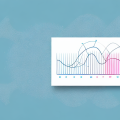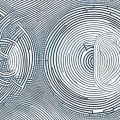The Greatest Common Factor (GCF) is a mathematical concept used to describe the largest prime number that is shared by two or more numbers. Understanding the concept is important to learners of all ages as it serves as the basis of many mathematical operations, such as division and factoring. In this article, you will learn what the GCF is, how to calculate it, how to identify it in problems, and how to apply it in mathematics.
What is the Greatest Common Factor?
The Greatest Common Factor (GCF) is the largest prime number that can divide into two or more numbers. The GCF can also be referred to as the “greatest common divisor” or the “highest common factor”. It is a single greatest (largest) number that is also a factor of two or more numbers. In other words, it is the largest number that divides into both numbers without leaving a remainder.
How to Calculate the Greatest Common Factor
The most common method for calculating the GCF is by starting with the smallest number and working your way up until you find the common factor. For example, if you have two numbers 6 and 8:
- Start with 6 and list all its factors: 1, 2, 3, and 6.
- Next, do the same for 8: 1, 2, 4, 8.
- The GCF of 6 and 8 is 2. This is because 2 is the largest number that divides into both numbers without leaving a remainder.
Another way to calculate the GCF is to use prime factorization. This method involves breaking down each number into its prime factors: i.e. numbers that are only divisible by 1 and themselves. For example, when factoring 36 and 48:
- 36 = 2 x 2 x 3 x 3
- 48 = 2 x 2 x 2 x 2 x 3
The GCF of 36 and 48 is 24 (2 x 2 x 2 x 3). This is because 24 is the product of the highest powers of common prime factors.
Identifying the Greatest Common Factor in a Problem
In order to identify the GCF in a problem, you need to first understand what type of problem it is. For example: if it is a division problem, then your goal should be to find the highest number that divides into both the dividend and divisor; or if it is a multiplication problem, your goal should be to identify the lowest common multiple of the two numbers.
Once you know what type of problem you are dealing with, you can then identify the GCF. To do this, you may need to factor each number into its prime factors and then identify which prime numbers are in common between the two. The product of these common factors will be your GCF.
Examples of the Greatest Common Factor
The following are two examples of how to find the GCF using both the factor method and prime factorization:
- Example 1: Find the greatest common factor of 12 and 18.
Answer: Using the factor method: The factors of 12 are 1, 2, 3, 4, and 6; and the factors of 18 are 1, 2, 3, 6, and 9. The greatest common factor of 12 and 18 is 6. Using prime factorization: 12 = 2 x 2 x 3 and 18 = 2 x 3 x 3. The product of these common factors is 6, which is the greatest common factor. - Example 2: Find the greatest common factor of 6 and 16.
Answer; Using the factor method: The factors of 6 are 1, 2, 3, and 6; and the factors of 16 are 1, 2, 4, 8, and 16. The greatest common factor of 6 and 16 is 2. Using prime factorization: 6 = 2 x 3 and 16 = 2 x 2 x 2 x 2. The product of these common factors is 2, which is the greatest common factor.
Advantages of Understanding the Greatest Common Factor
There are several advantages to understanding the GCF. One of these advantages is that it allows you to analyze numerical expressions faster than using long division or factoring. Additionally, when factoring large numbers, prime factorization can often be used in place of trial and error when trying to guess a number’s factors. Furthermore, understanding GCF can be used to quickly identify multiple solutions for other types of mathematical problems such as greatest common divisor or least common multiple. Finally, learning about GCF can provide students with strategies for solving more complex mathematical problems more efficiently.
The Role of the Greatest Common Factor in Math Education
The GCF plays an important role in mathematics education because it serves as an interdisciplinary bridge between algebraic and arithmetic principles. As a result, it can help students understand complex mathematical concepts that involve factoring, fractions, greatest common divisors, least common multiples, and other mathematical operations. Knowing how to calculate a GCF can be useful when solving equations or working with both rational and irrational numbers such as those found in algebraic expressions.
Tips for Remembering the Greatest Common Factor
When trying to remember how to calculate GCF, here are some tips that may help:
- Break down each number into its prime factors using factor trees.
- Focus on identifying only the common factors between any two numbers.
- Remember that the product of the highest powers of common factors will provide you with your GCF.
- Look for patterns among all whole numbers when trying to identify the GCF in a problem.
Summary and Conclusion
In summary, understanding the concept of GCF can be beneficial to students of all ages. It allows them to analyze numerical expressions faster than using long division or factoring methods. Additionally, using prime factorization can make factoring large numbers easier than using trial and error methods. Furthermore, by understanding GCF, learners can use its principles to apply in more complex mathematical problems such as establishing greatest common divisors or least common multiples.





